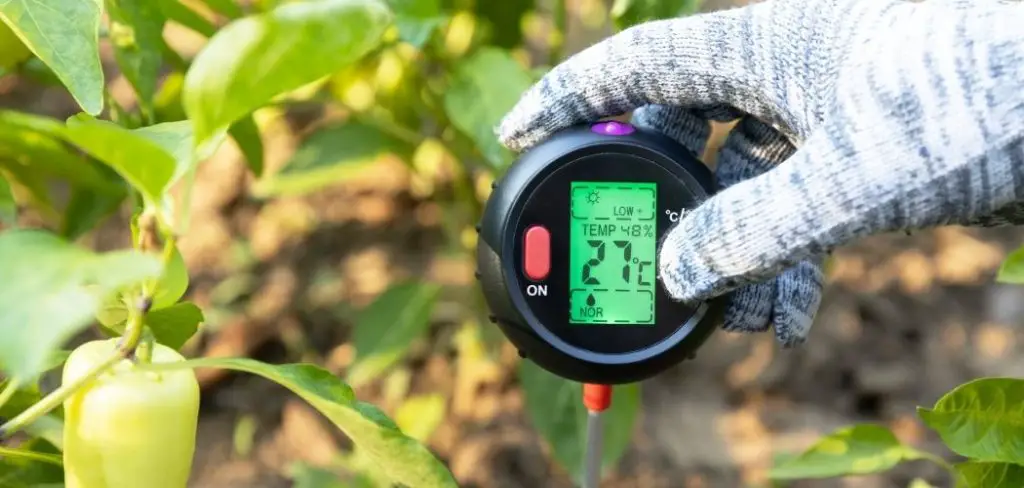Soil temperature is a critical factor in plant growth and development. It affects many essential processes such as nutrient uptake, root growth, and seed germination. Monitoring soil temperature is crucial for farmers, gardeners, and researchers who want to optimize plant growth and development. Soil thermometers are tools that measure soil temperature accurately and precisely. In this article, we will explore what soil thermometers are, how they work, and their applications.
What is a Soil Thermometer?
A soil thermometer is a tool that measures the temperature of the soil at different depths. Soil thermometers come in different types, including mercury, digital, and infrared thermometers. Mercury thermometers are made of glass and contain mercury, which expands or contracts depending on the temperature. Digital thermometers use electronic sensors to measure temperature and display the results on a screen. Infrared thermometers use infrared technology to measure temperature without touching the soil.
How Does a Soil Thermometer Work?
Soil thermometers work by using a temperature sensor to measure the temperature of the soil. The sensor is usually located at the bottom of the thermometer and comes into contact with the soil. The temperature sensor measures the heat energy emitted by the soil and converts it into a temperature reading. The accuracy of a soil thermometer depends on the quality of the temperature sensor, the calibration, and the factors that affect soil temperature.
Factors Affecting Soil Temperature
Soil temperature is affected by various factors such as solar radiation, soil moisture, soil texture, and depth of soil. Solar radiation is the primary source of heat for the soil. The amount of solar radiation received by the soil depends on the location, season, and time of day. Soil moisture affects soil temperature because water has a high heat capacity and can absorb or release heat. Soil texture affects soil temperature because different soils have different thermal properties. For example, clay soils have a higher heat capacity than sandy soils. The depth of the soil affects soil temperature because the deeper the soil, the less it is affected by temperature changes in the air.
Applications of Soil Thermometers
Soil thermometers have various applications in agriculture, horticulture, and scientific research. In agriculture, soil thermometers are used to monitor soil temperature and determine the best time for planting different crops. Different crops have different temperature requirements for germination and growth. By measuring soil temperature, farmers can choose the right crops and planting times to maximize yield and quality. In horticulture, soil thermometers are used to monitor soil temperature in greenhouses and nurseries. Greenhouse plants require a specific temperature range for optimal growth and development. By measuring soil temperature, gardeners can adjust the heating and cooling systems to maintain the right temperature range. In scientific research, soil thermometers are used to study the effects of temperature on soil processes such as nutrient availability and microbial activity.
How to Use a Soil Thermometer
To use a soil thermometer, follow these steps:
| 1. Select the right type of soil thermometer for your needs. |
| 2. Insert the thermometer probe into the soil at the desired depth. |
| 3. Wait for the temperature reading to stabilize. |
| 4. Record the temperature reading and repeat the process at different locations and depths. |
When using a soil thermometer, it’s essential to follow some best practices, such as calibrating the thermometer before use, using it at the right time of day, and avoiding areas with rocks or other obstacles.
Conclusion
Soil thermometers are essential tools for monitoring soil temperature and optimizing plant growth and development. They come in different types, including mercury, digital, and infrared thermometers. Soil thermometers work by using a temperature sensor to measure the temperature of the soil. The accuracy of a soil thermometer depends on the quality of the temperature sensor, the calibration, and the factors that affect soil temperature. Soil temperature is affected by various factors such as solar radiation, soil moisture, soil texture, and depth of soil. Soil thermometers have various applications in agriculture, horticulture, and scientific research. To use a soil thermometer, it’s essential to follow some best practices, such as calibrating the thermometer before use and using it at the right time of day.
In the future, soil thermometers may become even more accurate and sophisticated, with the ability to measure temperature at multiple depths simultaneously and transmit data wirelessly to computers or mobile devices. This would allow farmers, gardeners, and researchers to monitor soil temperature in real-time and make more informed decisions about planting, watering, and fertilizing.
FAQs
Why is soil temperature important for plant growth?
Soil temperature affects many essential processes such as nutrient uptake, root growth, and seed germination. Different crops have different temperature requirements for germination and growth, so monitoring soil temperature is crucial for farmers and gardeners who want to optimize plant growth and development.
What is the best time of day to measure soil temperature?
The best time of day to measure soil temperature is early in the morning or late in the afternoon when the temperature is most stable. Avoid measuring soil temperature during the heat of the day or during periods of high wind or rainfall.
Can digital soil thermometers be calibrated?
Yes, digital soil thermometers can be calibrated. Calibration involves comparing the thermometer’s readings with a known standard and adjusting it if necessary to ensure accuracy.
How often should soil temperature be measured with a soil thermometer?
The frequency of soil temperature measurements depends on the specific needs and goals of the user. In general, soil temperature should be measured regularly throughout the growing season to monitor changes in temperature and make informed decisions about planting, watering, and fertilizing.
Can soil thermometers be used for indoor plants?
Yes, soil thermometers can be used for indoor plants. Indoor plants also require a specific temperature range for optimal growth and development, and monitoring soil temperature is essential to ensure they thrive.

